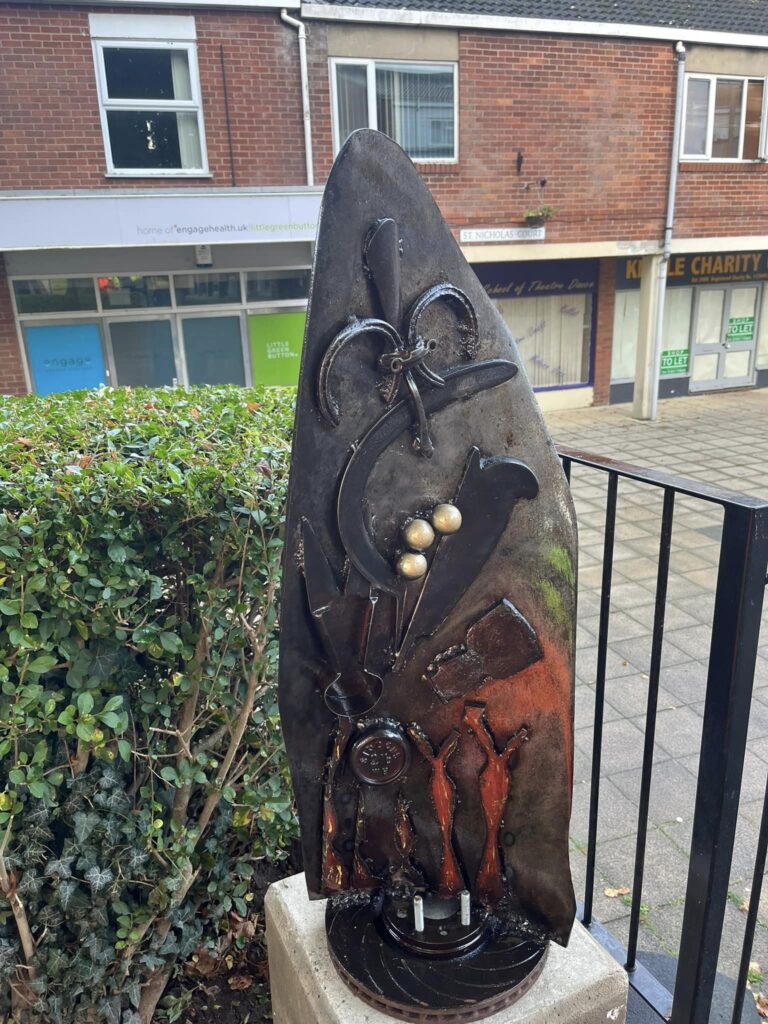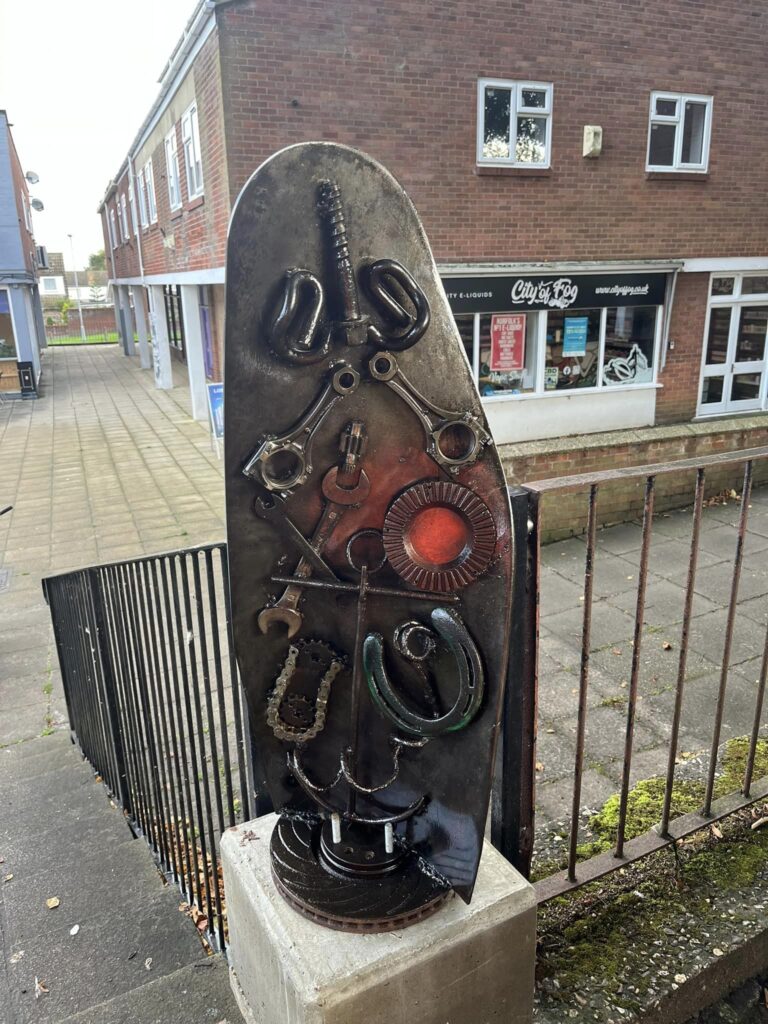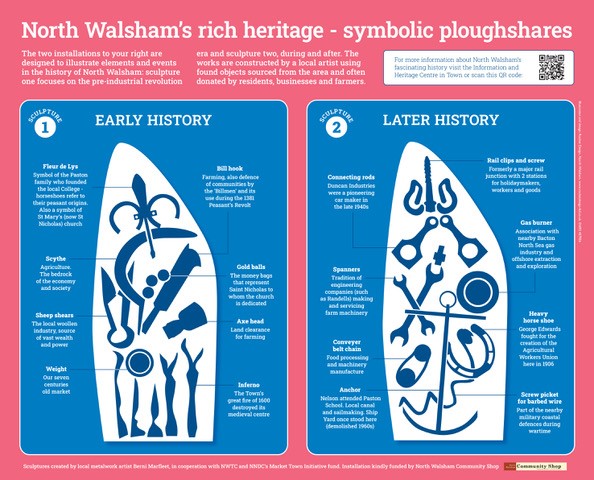Between the churchyard and St Nicholas Court are two sculptures constructed by a local artist using found objects sourced from the area and donated by residents, businesses and farmers.
These were designed to illustrate elements and events in the history of North Walsham. One sculpture
focuses on the pre-industrial revolution era and the other, during and after that period
- Inferno – The Town’s great fire of 1600 destroyed its medieval centre. See also The Market Place
- Sheep shears – The local woollen industry, source of vast wealth and power
- Weight – Our seven centuries old market. See also The Market Place
- Axe head – Land clearance for farming
- Scythe – Agriculture. The bedrock of the economy and society
- Gold balls – The money bags that represent Saint Nicholas to whom the church is dedicated. See also Churches
- Bill hook – Farming, also defence of communities by the ‘Billmen’ and its use during the 1381 Peasant’s Revolt
- Fleur de Lys – Symbol of the Paston family who founded the local College – horseshoes refer to their peasant origins. Also a symbol of St Mary’s (now St Nicholas) church. See also The Paston family and Paston School
- Rail clips and screw – Formerly a major rail junction with 2 stations for holidaymakers, workers and goods. See also Two railway stations
- Connecting rods – Duncan Industries were a pioneering car maker in the late 1940s. See also Duncan Industries
- Spanners – Engineering companies such as Randells making and servicing farm machinery. See also Randell Ltd
- Anchor – Nelson attended Paston School – Local canal and sailmaking – Ship Yard once stood here (demolished 1960s)
- Conveyer belt chain – Food processing and machinery manufacture. See also Norfolk Canneries
- Gas burner – Association with nearby Bacton North Sea gas industry and offshore extraction and exploration
- Heavy horse shoe – George Edwards fought for the creation of the Agricultural Workers Union here in 1906
- Screw picket for barbed wire – Part of the nearby military coastal defences during wartime. See also Second world war


